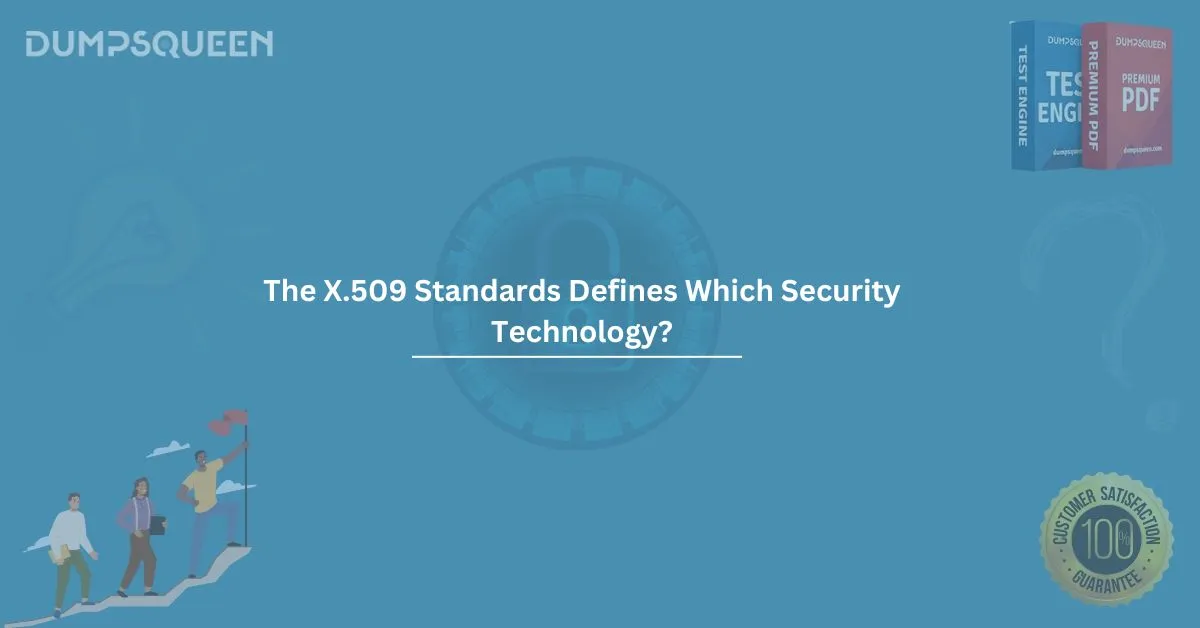In today’s digital landscape, security is a paramount concern, and the X.509 standard plays a crucial role in ensuring the confidentiality, integrity, and authentication of communications. As a critical element of modern cryptographic systems, the X.509 standard is frequently utilized in a variety of security technologies, including public key infrastructure (PKI), digital certificates, and secure communications protocols.
What is X.509?
X.509 is a standard defined by the International Telecommunication Union (ITU) for public-key cryptography. It provides a framework for the implementation of digital certificates, which are used to establish a trust relationship between entities in a network. These certificates are vital for establishing secure communications, such as email encryption, online banking, and more.
The X.509 standard was initially developed to support the Directory Access Protocol (DAP), but over time, it evolved to become the foundation for various security technologies, particularly in the realm of public key infrastructure (PKI). It is a key element in the functioning of secure sockets layer (SSL) and transport layer security (TLS), ensuring the safety of online transactions and communications.
Key Components of X.509
- Digital Certificates: The most well-known application of X.509 is the use of digital certificates. These certificates contain the public key of an entity along with identifying information about the entity, such as its name, email, and organizational details. The certificate also includes a signature from a trusted Certificate Authority (CA) to verify its authenticity.
- Public Key Infrastructure (PKI): X.509 certificates are integral to PKI, which is the system used for managing digital keys and certificates. PKI allows entities to securely exchange information over a network by using asymmetric encryption, where public and private keys are utilized for encryption and decryption.
- Certificate Authorities (CAs): These are trusted entities that issue X.509 certificates. CAs play a pivotal role in the PKI framework by verifying the identity of certificate holders before issuing certificates, which ensures that the public key contained in the certificate belongs to the correct individual or organization.
- Revocation Lists: The X.509 standard includes provisions for managing the revocation of certificates. If a certificate is compromised or no longer valid, it can be revoked, and its status is maintained in a Certificate Revocation List (CRL) or through the Online Certificate Status Protocol (OCSP).
- Digital Signatures: X.509 certificates are often used to create digital signatures. A digital signature is a cryptographic technique used to verify the authenticity of messages and documents. It ensures that the message has not been altered and confirms the identity of the sender.
X.509 and Security Technology
The X.509 standard defines several key elements that support a variety of security technologies. The primary technology associated with X.509 is Public Key Infrastructure (PKI). Here’s how X.509 fits into the broader landscape of security technology:
- SSL/TLS Encryption: X.509 certificates are fundamental to SSL/TLS encryption, the technology that secures internet traffic. When you visit a website that begins with "https://," your browser uses SSL/TLS to establish an encrypted connection between your device and the website’s server. The X.509 certificate issued by a trusted Certificate Authority (CA) helps verify that the website is authentic and secure.
- VPNs and Secure Communications: Virtual Private Networks (VPNs) also rely on X.509 certificates to establish secure connections between clients and servers. Through the use of these certificates, VPNs can ensure that data being transmitted over a public network is encrypted and protected.
- Email Encryption: Many email services use X.509 certificates to encrypt emails and verify the identity of the sender. This is particularly important for sensitive communications where confidentiality is critical, such as in financial transactions or healthcare.
- Code Signing: X.509 certificates are used in the process of code signing. Software developers use these certificates to sign their applications, ensuring that the code has not been tampered with and that it comes from a trusted source.
The X.509 Standards in Real-World Applications
- E-commerce: Online shopping platforms use SSL/TLS protocols to ensure that transactions are secure. X.509 certificates are essential in authenticating the merchant’s identity and encrypting payment information.
- Healthcare: The healthcare industry uses X.509 certificates for securing patient information through encrypted communication channels, ensuring compliance with regulations such as HIPAA (Health Insurance Portability and Accountability Act).
- Government and Military: Government agencies and military organizations often deploy X.509 certificates to ensure that sensitive data is protected during communication between different departments or international allies.
X.509: A Foundation for Trust
At its core, the X.509 standard is about creating a framework for trust. By using digital certificates issued by trusted Certificate Authorities, the X.509 standard ensures that communications between parties can be authenticated, and that data can be encrypted to protect its confidentiality. Without the X.509 standard and the trust it fosters, many of the secure systems we rely on today would be significantly less effective and potentially vulnerable to attacks.
In summary, the X.509 standards define public-key infrastructure (PKI) and digital certificates, which are fundamental to modern security technologies such as SSL/TLS, email encryption, and more. Its role in securing communications and data cannot be overstated, as it serves as the backbone of trust in the digital world.



